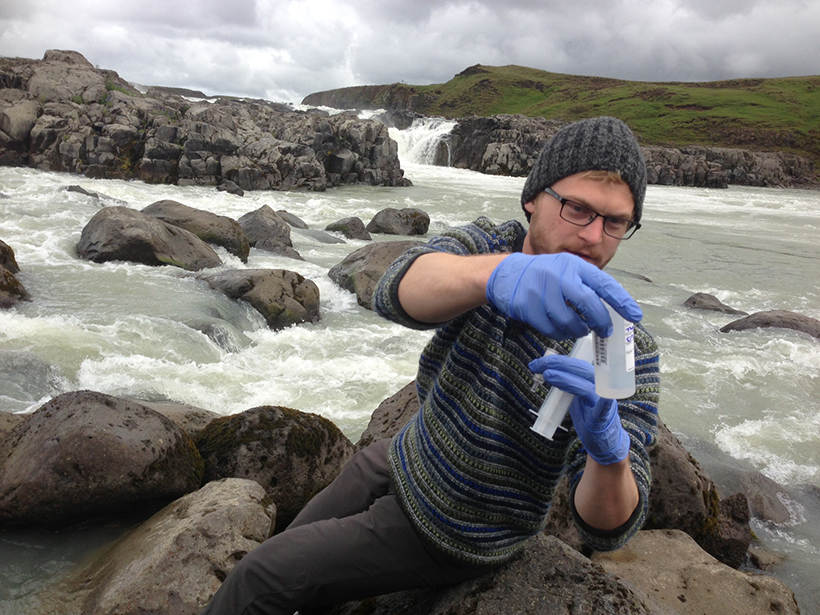Oxygen is in the air, in part because one of the things that might snatch it out of the air is in jail.
That is, in a jail where the jailers are minerals, according to new research.
When things like plants die, microbes suck oxygen out of the air as they help the plants decay and rot. They do this to such an extent that if all the organic matter from every dead thing rotted, the atmosphere ought to have very little oxygen in it for us to breathe.
But there is oxygen in the air. (Clearly. If there wasn’t, neither of us would be enjoying this story.)
What’s keeping microbes from consuming the organic carbon in Earth’s rock record—and our oxygen along the way?
“It’s a long-standing question that has been debated for many years now,” said Lawrence Mayer, a biogeochemist at the University of Maine. The debate is this: What’s keeping microbes from consuming the organic carbon in Earth’s rock record—and our oxygen along the way?
There are two suspects. The first is the selective preservation hypothesis, explained Jordon Hemingway, a biogeochemist at Harvard who led the new research that published in June in Nature. The selective preservation hypothesis is the idea that the organic carbon molecules left behind by the dead are somehow very hard for microbes to break down.
The second suspect is the jail idea, also known as the mineral protection hypothesis, wherein minerals shackle organic molecules with chemical bonds, protecting them from hungry microbes.
“Do we see evidence for this selectivity hypothesis or this mineral protection hypothesis?” Hemingway asked.
To settle things, Hemingway and his team placed sediment samples from places like Hawaii, Alaska, Antarctica, and Iceland in an oven. The thought was that if the organic carbon is, indeed, in mineralogical shackles, it ought to take a little extra heat energy to break its chains and emit as carbon dioxide (CO2) gas.
“I think it’s a big breakthrough.”
The oven hit 100°C, then 150°C, and at around 250°C the team measured CO2 . The gas continued to emit until around 500°C to 600°C, well above the 350°C to 400°C range within which the samples would otherwise finish emitting CO2 if there were no bonds between the molecules and the minerals.
The Air We Breathe
“I think it’s a big breakthrough,” said Mayer, who was not involved in the study.
Evidence supporting the mineral protection hypothesis is a breakthrough because it’s one of the smoking guns researchers can use to explain why there is oxygen in the air, and it shines a light on how that oxygen made it into the atmosphere in the first place around 2.5 billion years ago.
“We know that early on you didn’t have oxygen, and then you had it,” Mayer said. “Did mineral protection arise at some time?”
Oxygen’s rise opened the door for complex life-forms like the first known animals to evolve, and Hemingway and his team’s discovery offers a straightforward explanation for why that oxygen came to be: because its wannabe kidnappers were safely locked away.
“What’s that phrase?” asked Rick Keil, a marine geochemist at the University of Washington who was not involved in the research. “‘Nature is elegant in its simplicity.’ This is an example of a beautiful paper that highlights that.”
—Lucas Joel, Freelance Journalist
Citation:
Joel, L. (2019), The jail that keeps oxygen in the air, Eos, 100, https://doi.org/10.1029/2019EO129307. Published on 25 July 2019.
Text © 2019. The authors. CC BY-NC-ND 3.0
Except where otherwise noted, images are subject to copyright. Any reuse without express permission from the copyright owner is prohibited.

